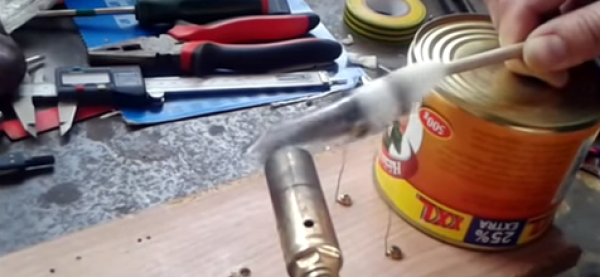Stirling engines are really cool machines, invented by Reverend Dr. Robert Stirling in 1816 to rival the steam engine, they are one of the most efficient engines ever conceived. Building one is a very rewarding experience, but it has a certain level of difficulty. However, [Attila Blade]’s version of a free-piston type Stirling engine is simple enough to be built in a matter of minutes.
To build the engine you only need a test tube, steel wool, a latex glove, an O ring and some wire. The construction is straightforward as you can see in the video. The whole engine rocks on the wire frame which also makes it different to most other Stirling engines that you can watch on the net. The free piston is just one type of several possible configurations for a Stirling. The most common one, is the beta type, usually made with soda cans, but it is much more difficult to build than [Attila Blade]’s engine.
This is definitely a fun project that you may want to try, and is also a great way to learn thermodynamics concepts. Even if you don’t build this particular version, there are many other possibilities using mainly household items, or you can also check the very interesting history behind the Stirling engine.






















